
Discover the Majestic Somoto Canyon
Explore the stunning Somoto Canyon in Nicaragua, a hidden gem offering thrilling adventures, breathtaking views, and a rich cultural experience in the heart of nature.
Somoto Canyon, nestled in the northern highlands of Nicaragua, is a natural wonder that offers breathtaking views and thrilling adventures. Carved by the Coco River over millions of years, this impressive geological formation is one of Nicaragua's oldest and most scenic attractions. The canyon stretches over 5 miles, with towering cliffs that reach up to 490 feet in height, creating a dramatic and awe-inspiring landscape. Visitors to Somoto Canyon can enjoy a variety of activities, from leisurely hikes along the canyon's rim to exhilarating swims and jumps into its crystal-clear waters. Guided tours offer the opportunity to explore the canyon in-depth, with knowledgeable guides sharing insights about its geological history and unique flora and fauna. For those seeking an adrenaline rush, there are options for rappelling down the canyon walls or tubing through the river's gentle rapids. Beyond its natural beauty, Somoto Canyon is also a place of cultural significance. The nearby town of Somoto offers a glimpse into traditional Nicaraguan life, with vibrant markets, local crafts, and delicious cuisine. The region is known for its warm and welcoming locals, who are always eager to share their heritage and traditions with visitors.
Local tips in Somoto Canyon
- Wear comfortable and sturdy shoes suitable for hiking and water activities.
- Bring a waterproof camera to capture the canyon’s stunning scenery.
- Hire a local guide to learn about the canyon's history and natural features.
- Visit in the dry season (December to April) for the best weather conditions.
- Pack a picnic and enjoy a meal by the river for a memorable experience.
- Stay hydrated and bring plenty of water, especially during long hikes.
Discover the Majestic Somoto Canyon
Somoto Canyon, nestled in the northern highlands of Nicaragua, is a natural wonder that offers breathtaking views and thrilling adventures. Carved by the Coco River over millions of years, this impressive geological formation is one of Nicaragua's oldest and most scenic attractions. The canyon stretches over 5 miles, with towering cliffs that reach up to 490 feet in height, creating a dramatic and awe-inspiring landscape. Visitors to Somoto Canyon can enjoy a variety of activities, from leisurely hikes along the canyon's rim to exhilarating swims and jumps into its crystal-clear waters. Guided tours offer the opportunity to explore the canyon in-depth, with knowledgeable guides sharing insights about its geological history and unique flora and fauna. For those seeking an adrenaline rush, there are options for rappelling down the canyon walls or tubing through the river's gentle rapids. Beyond its natural beauty, Somoto Canyon is also a place of cultural significance. The nearby town of Somoto offers a glimpse into traditional Nicaraguan life, with vibrant markets, local crafts, and delicious cuisine. The region is known for its warm and welcoming locals, who are always eager to share their heritage and traditions with visitors.
When is the best time to go to Somoto Canyon?
Iconic landmarks you can’t miss
Somoto Canyon National Monument
Explore the stunning landscapes and thrilling adventures at Somoto Canyon National Monument, Nicaragua's natural wonder waiting to be discovered.
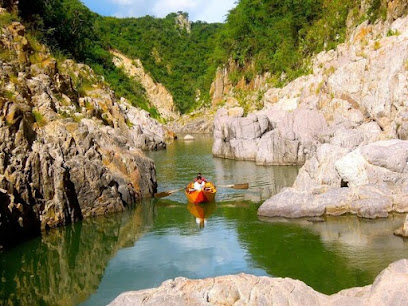
Somoto Canyon Tours
Discover the stunning beauty and thrilling adventures at Somoto Canyon Tours in Nicaragua's breathtaking landscapes.

La Ceibita Tours Somoto Canyon
Experience the adventure of a lifetime at La Ceibita Tours Somoto Canyon, where thrilling canyoning meets breathtaking Nicaraguan landscapes.

Somoto canyon Adventure
Experience the breathtaking beauty and thrilling adventures at Somoto Canyon, a top destination for outdoor enthusiasts in Nicaragua.

CAÑON DE SOMOTO, FINBAC
Experience the breathtaking beauty of Cańon de Somoto, Nicaragua's stunning natural attraction with crystal-clear waters and rich biodiversity.

Cañón de Somoto
Explore Cañón de Somoto, Nicaragua's breathtaking national park known for dramatic landscapes, rich biodiversity, and thrilling outdoor adventures.

Cañon de Somoto
Experience the stunning Cañon de Somoto in Nicaragua, a breathtaking natural wonder perfect for adventure and relaxation amidst spectacular landscapes.

FINCA BALCON DEL CAÑON
Experience the beauty of Nicaragua at Finca Balcón del Cañon, a serene farmstay nestled in the breathtaking Valle de Sonis.

Unmissable attractions to see
Central Park
Explore the natural beauty and vibrant atmosphere of Central Park in Somoto, a perfect escape for nature lovers and culture enthusiasts alike.

Laguna La Bruja
Experience the serene beauty of Laguna La Bruja in San Antonio, Nicaragua, a tranquil lagoon perfect for nature lovers and adventure seekers alike.

CAÑON DE SOMOTO, FINBAC
Explore the breathtaking beauty of CAÑON DE SOMOTO, Nicaragua’s spectacular natural wonder, perfect for adventure and relaxation.
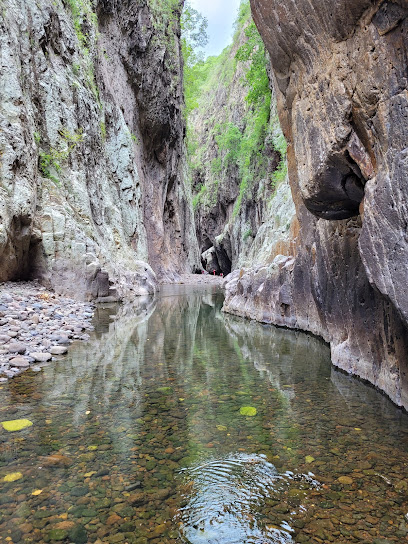
Lucila Park
Immerse yourself in the serene beauty of Lucila Park, a lush green oasis in Somoto, Nicaragua, perfect for relaxation and family fun.

Somoto Nature Center
Discover the biodiversity of Nicaragua at Somoto Nature Center, where adventure meets education in stunning natural surroundings.

INVERNADERO DE ORQUIDEAS
Explore the stunning beauty of Invernadero de Orquideas in Somoto, a serene park showcasing a diverse collection of orchids and lush landscapes.

Petroglifos de la Cueva del Matasano
Explore the ancient petroglyphs of Petroglifos de la Cueva del Matasano, where history and nature intertwine in the heart of Nicaragua.

Cacauli
Explore Cacauli, a breathtaking hiking area in Somoto, Nicaragua, where adventure meets stunning natural beauty.

La Rueda
Discover the thrilling beauty of La Rueda in Chihuahua, a captivating tourist attraction offering breathtaking views and rich local culture.

Piedra Batea
Experience the serene beauty of Piedra Batea, a nature preserve in Somoto, Nicaragua, where adventure meets tranquility amidst stunning landscapes.

Cueva del Toro
Explore the enchanting Cueva del Toro in Buenos Aires, a natural wonder filled with stunning rock formations and rich biodiversity.

Paseo La amistad
Discover tranquility at Paseo La Amistad, a beautiful park in Somoto, Nicaragua, ideal for relaxation, picnics, and cultural experiences.

la vuelta
Explore La Vuelta: A stunning tourist attraction in El Jocote, Nicaragua, showcasing nature's beauty and rich cultural experiences.

El Horno
Explore the natural beauty and vibrant culture of El Horno, a captivating tourist attraction in Nicaragua, perfect for relaxation and adventure.
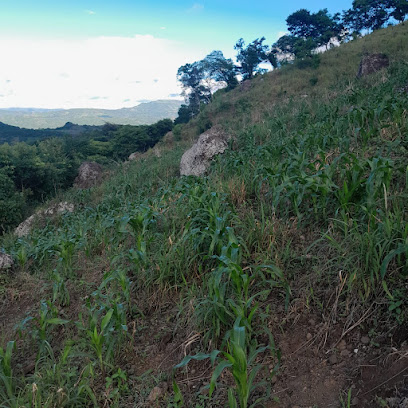
el mirador municipal de san lucas
Discover the stunning landscapes and vibrant culture at El Mirador Municipal de San Lucas, a must-see tourist attraction in Nicaragua.

Essential places to dine
Llamarada del Bosque
Discover Llamarada del Bosque in Ocotal - where traditional Nicaraguan flavors meet a warm and welcoming atmosphere.

Carne Asada El Buen Gusto 2
Discover authentic Nicaraguan cuisine at Carne Asada El Buen Gusto 2 in Somoto—where every bite tells a flavorful story.

Buffet Doña Leo
Experience authentic Nicaraguan cuisine at Buffet Doña Leo - a delightful buffet in Condega offering diverse flavors at unbeatable prices.

Restaurante El Puente
Experience authentic Nicaraguan flavors at Restaurante El Puente in Somoto - a culinary gem celebrating local cuisine.

Valhalla
Experience authentic Nicaraguan cuisine at Valhalla in Condega – where every dish tells a story of flavor and tradition.

Vivero y Res. Tipico La Peña
Experience authentic Nicaraguan cuisine at Vivero y Res. Tipico La Peña in Somoto – where flavor meets tradition in every dish.

El Patio
Experience authentic Nicaraguan cuisine at El Patio in Somoto – where flavor meets hospitality in a charming atmosphere.

Restaurante El Almendro
Experience the best of Nicaraguan flavors at Restaurante El Almendro in Somoto – where every meal tells a story.

La Planta Unplugged - Cervecería Artesanal Somoteña.
Experience the vibrant craft beer culture at La Planta Unplugged in Somoto—where local flavors meet artisanal brewing.

Cevifish
Discover authentic Nicaraguan seafood at Cevifish in Somoto - where flavor meets affordability.

Burritos Tacos
Experience the authentic taste of Nicaragua at Burritos Tacos, where every bite tells a flavorful story.

Restaurante Rancho Géminis
Experience authentic Nicaraguan cuisine at Restaurante Rancho Géminis in Pueblo Nuevo—where every dish tells a story.
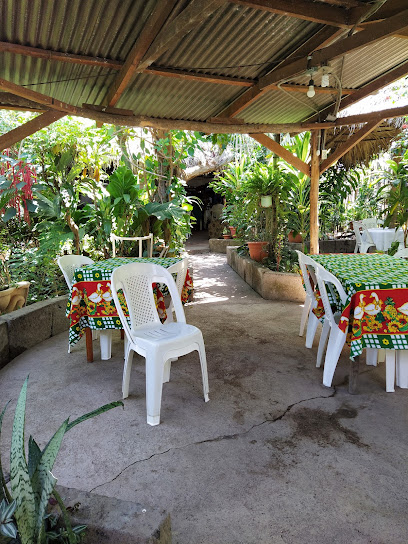
La Abejita
Experience the heart of Nicaraguan cuisine at La Abejita in Somoto - where every meal tells a story.

bar y restaurante el mirador
Experience breathtaking views and authentic Nicaraguan cuisine at Bar y Restaurante El Mirador in Somoto.

Tipico Real 2
Discover authentic Nicaraguan flavors at Tipico Real 2 in Somoto – where every meal is a celebration of local culinary traditions.

Markets, malls and hidden boutiques
Palí Somoto
Explore Palí Somoto, the heart of local shopping in Somoto, Nicaragua, offering a rich selection of groceries and local flavors.

Somoto Canyon National Monument
Explore the stunning Somoto Canyon National Monument, a natural wonder in Nicaragua known for its breathtaking landscapes and outdoor adventures.

Somoto Canyon Tours
Explore the stunning natural beauty and thrilling adventures of Somoto Canyon with expert-guided tours for all levels of adventurers.

La Ceibita Tours Somoto Canyon
Discover the breathtaking beauty of Somoto Canyon with La Ceibita Tours - an unforgettable adventure in Nicaragua's stunning landscapes.

Somoto canyon Adventure
Discover the breathtaking landscapes and thrilling adventures at Somoto Canyon, a natural wonder in Nicaragua perfect for nature lovers and thrill-seekers.

Cañón de Somoto
Explore the breathtaking Cañón de Somoto, a natural wonder in Nicaragua, perfect for adventure seekers and nature lovers seeking stunning landscapes.

And hojaldras Somoto hotcakes doraditas Always!
Delight in the authentic flavors of Nicaragua with scrumptious hotcakes and local delicacies at And Hojaldras Somoto.

Namancambre Tours
Unleash your adventurous spirit with Namancambre Tours – explore the stunning Somoto Canyon and immerse yourself in Nicaragua's natural beauty.

Rosquillas Luz Vilchez
Discover the sweetness of Somoto at Rosquillas Luz Vilchez, where delightful donuts and rich espresso create an unforgettable culinary experience.

Tienda Azul (Comisariato)
Discover the flavors of Nicaragua at Tienda Azul, Somoto's vibrant supermarket offering local produce, snacks, and unique souvenirs.

Win sport Nicaragua
Explore the vibrant styles of Win Sport Nicaragua in Somoto, where local fashion meets cultural heritage.

L & K Boutique
Experience local fashion at L & K Boutique in Somoto, where style meets tradition in a charming shopping atmosphere.

Fonda son Delicias
Discover Fonda son Delicias, a cozy coffee shop in Somoto offering local brews and a taste of Nicaraguan culture in a charming atmosphere.

Besillima Fashion & MakeUp
Discover Besillima Fashion & MakeUp in Somoto, a top destination for beauty lovers seeking quality products and personalized service.

FINCA BALCON DEL CAÑON
Experience tranquil farmstay at Finca Balcon del Cañon in Valle de Sonis, Nicaragua, surrounded by breathtaking landscapes and rich local culture.

Essential bars & hidden hideouts
El Patio
Experience the flavors of Nicaragua at El Patio, a vibrant bar and restaurant in Somoto, perfect for a delightful dining experience.
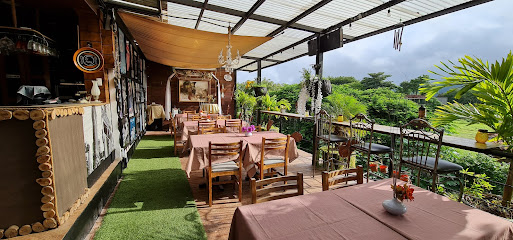
La Planta Unplugged - Cervecería Artesanal Somoteña.
Discover La Planta Unplugged in Somoto, a vibrant brewpub offering artisanal craft beers and delicious local cuisine in a lively atmosphere.

Cevifish
Experience the essence of Nicaragua at Cevifish, where fresh seafood meets local flavor in a vibrant setting.

Bar Oes3
Experience the lively atmosphere and extensive drink selection at Bar Oes3, the perfect nightlife spot in Somoto for travelers and locals alike.

bar y restaurante el mirador
Experience the best of Nicaraguan cuisine and breathtaking views at Bar y Restaurante El Mirador in Somoto.

Flor De Bartolina
Discover Flor De Bartolina in Somoto, a vibrant bar offering authentic Nicaraguan drinks, live music, and a lively atmosphere perfect for socializing.

Bukanas
Discover Bukanas in Somoto: A charming bar offering refreshing drinks and a welcoming atmosphere for travelers seeking relaxation.

Fast food El Bajon
Experience the vibrant flavors of Somoto at Fast Food El Bajon, your go-to spot for delicious grilled dishes in a friendly atmosphere.

Bar Y Hospedaje El Aereo
Experience the vibrant nightlife and local charm at Bar Y Hospedaje El Aereo in Somoto, Nicaragua, where every visit is a celebration of culture.

Bar Milenio
Experience the vibrant nightlife at Bar Milenio, a bustling bar in Pueblo Nuevo serving exquisite drinks and a lively atmosphere for all visitors.

Bar Las 4H
Discover the authentic flavors of Nicaragua at Bar Las 4H, a vibrant grill offering delightful grilled dishes in El Espino.

LA PLANTA UNPLUGGED - CERVECERÍA ARTESANAL
Discover the essence of Nicaraguan craft beer at La Planta Unplugged, a lively beer hall in Somoto with unique flavors and a welcoming atmosphere.
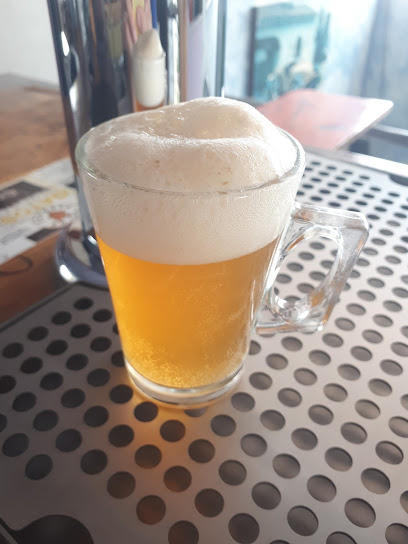
Bar y Restaurante El Típico
Discover the vibrant flavors of Nicaragua at Bar y Restaurante El Típico, a must-visit spot in El Espino for food and drink enthusiasts.

Julio velasquez
Discover the vibrant atmosphere and local flavors at Julio Velasquez, the ultimate bar experience in the heart of Somoto, Nicaragua.

Vecinos
Discover the flavors of Nicaragua at Vecinos in Somoto, where traditional cuisine meets a cozy ambiance.

Local Phrases about Somoto Canyon
-
- HelloBuenas
[bweh-nahs] - GoodbyeAdiós
[ah-dee-ohs] - YesSí
[see] - NoNo
[noh] - Please/You're welcomePor favor/De nada
[pohr fah-vohr/deh nah-dah] - Thank youGracias
[grah-see-ahs] - Excuse me/SorryDisculpe/Lo siento
[dees-kool-peh/loh see-ehn-toh] - How are you?¿Cómo estás?
[koh-moh ehs-tahs] - Fine. And you?Bien. ¿Y tú?
[byehn. ee too] - Do you speak English?¿Hablas inglés?
[ah-blahs een-glehs] - I don't understandNo entiendo
[noh ehn-tee-ehn-doh]
- HelloBuenas
-
- I'd like to see the menu, pleaseMe gustaría ver el menú, por favor
[meh goos-tah-ree-ah behr ehl meh-noo, pohr fah-vohr] - I don't eat meatNo como carne
[noh koh-moh kahr-neh] - Cheers!¡Salud!
[sah-loohd] - I would like to pay, pleaseMe gustaría pagar, por favor
[meh goos-tah-ree-ah pah-gahr, pohr fah-vohr]
- I'd like to see the menu, pleaseMe gustaría ver el menú, por favor
-
- Help!¡Ayuda!
[ah-yoo-dah] - Go away!¡Vete!
[veh-teh] - Call the Police!¡Llama a la policía!
[yah-mah ah lah poh-lee-see-ah] - Call a doctor!¡Llama a un doctor!
[yah-mah ah oon dohk-tohr] - I'm lostEstoy perdido/a
[ehs-toy pehr-dee-doh/ah] - I'm illEstoy enfermo/a
[ehs-toy ehn-fehr-moh/ah]
- Help!¡Ayuda!
-
- I'd like to buy...Me gustaría comprar...
[meh goos-tah-ree-ah kohm-prahr] - I'm just lookingSolo estoy mirando
[soh-loh ehs-toy mee-rahn-doh] - How much is it?¿Cuánto cuesta?
[kwan-toh kwehs-tah] - That's too expensiveEsto es demasiado caro
[ehs-toh ehs deh-mah-syah-doh kah-roh] - Can you lower the price?¿Puedes bajar el precio?
[pweh-dehs bah-hahr ehl pree-syoh]
- I'd like to buy...Me gustaría comprar...
-
- What time is it?¿Qué hora es?
[keh oh-rah ehs] - It's one o'clockEs la una
[ehs lah oo-nah] - Half past (10)Las diez y media
[lahs dyehs ee meh-dee-ah] - MorningMañana
[mah-nyah-nah] - AfternoonTarde
[tahr-deh] - EveningNoche
[noh-cheh] - YesterdayAyer
[ah-yehr] - TodayHoy
[oy] - TomorrowMañana
[mah-nyah-nah] - 1Uno
[oo-noh] - 2Dos
[dohs] - 3Tres
[trehs] - 4Cuatro
[kwah-troh] - 5Cinco
[seen-koh] - 6Seis
[sehs] - 7Siete
[syeh-teh] - 8Ocho
[oh-choh] - 9Nueve
[nweh-veh] - 10Diez
[dyehs]
- What time is it?¿Qué hora es?
-
- Where's a/the...?¿Dónde está un/el...
[dohn-deh ehs-tah oon/ehl] - What's the address?¿Cuál es la dirección?
[kwal ehs lah dee-rehk-syohn] - Can you show me (on the map)?¿Puedes mostrarme (en el mapa)?
[pweh-dehs mohs-trahr-meh (ehn ehl mah-pah)] - When's the next (bus)?¿Cuándo es el próximo (autobús)?
[kwan-doh ehs ehl proh-ksee-moh (ow-toh-booce)] - A ticket (to ....)Un boleto (para ...)
[oon boh-leh-toh (pah-rah)]
- Where's a/the...?¿Dónde está un/el...
History of Somoto Canyon
-
Somoto Canyon, located in the Madriz department of Nicaragua, is a natural wonder that dates back over 5 to 13 million years. Formed by volcanic activity and subsequent erosion by the Rio Coco, the canyon showcases steep, towering walls of ancient rock formations that offer a glimpse into the Earth's dynamic geological processes.
-
The canyon and its surrounding areas were traditionally inhabited by the Chorotega people, an indigenous group known for their advanced agricultural practices and rich cultural traditions. Artifacts and remnants of early human settlement in the area highlight the deep-rooted connection between the indigenous communities and this natural landscape.
-
Though Somoto Canyon was known to local communities for centuries, it wasn't until 2004 that its significance was recognized by the scientific community. A group of Nicaraguan and Czech geologists 'discovered' the canyon during an expedition, leading to increased interest and subsequent studies of its unique geological features.
-
In 2006, the Nicaraguan government declared Somoto Canyon a national monument, recognizing its ecological, cultural, and scientific importance. This designation aimed to protect the canyon's natural beauty while promoting eco-tourism and sustainable development in the region.
-
Somoto Canyon holds a special place in the hearts of local communities. Traditional folklore and legends often feature the canyon as a mystical and sacred place. Annual festivals and cultural events celebrate the canyon, blending indigenous traditions with modern Nicaraguan culture.
-
Over the past two decades, Somoto Canyon has become a popular destination for eco-tourism. Activities such as hiking, swimming, and rock climbing attract visitors from around the world. The local community has embraced this opportunity, developing sustainable tourism practices that benefit both the environment and the economy.
Somoto Canyon Essentials
-
Somoto Canyon is located in the Madriz Department of Nicaragua, near the town of Somoto. The nearest international airport is Augusto C. Sandino International Airport in Managua, approximately 230 kilometers away. From Managua, you can take a bus or a rented car to Somoto. The journey by road typically takes around 4-5 hours. Buses run regularly from Managua to Somoto, and the trip is both affordable and scenic.
-
Once in Somoto, local transportation options include taxis and mototaxis (three-wheeled vehicles). Walking is also a viable option for exploring the town and nearby areas. For visiting the canyon itself, guided tours often include transportation to and from the canyon. Renting a car offers more flexibility if you plan to explore the surrounding region.
-
The official currency in Nicaragua is the Nicaraguan Córdoba (NIO). While credit cards are accepted in larger hotels and restaurants, it is advisable to carry cash, especially for smaller establishments and local markets. ATMs are available in Somoto, but it’s a good idea to withdraw sufficient cash in Managua before traveling to ensure you have enough funds.
-
Somoto is generally safe for tourists, but it’s always wise to exercise standard precautions. Avoid walking alone at night in unfamiliar areas and keep an eye on your belongings in crowded places. While there are no specific high-crime areas targeting tourists, staying vigilant and aware of your surroundings is always best practice.
-
In case of emergency, dial 118 for police assistance or 128 for medical emergencies. The local hospital in Somoto can handle most medical issues. It’s recommended to have travel insurance that covers medical emergencies. For minor health concerns, there are pharmacies in the town where you can purchase over-the-counter medications.
-
Fashion: Do wear comfortable, sturdy footwear for exploring the canyon. Swimwear is appropriate for water activities, but cover up when not swimming. Religion: Do respect local customs and traditions, although Somoto is not particularly known for religious conservatism. Public Transport: Do be polite and greet the driver and fellow passengers. Taxis and mototaxis are common; agree on the fare before the trip. Greetings: Do greet people with a friendly 'Hola' or 'Buenas' and a handshake. Eating & Drinking: Do try local dishes like 'nacatamales' and 'quesillo.' Don’t refuse food offerings, as it can be considered impolite.
-
To experience Somoto Canyon like a local, consider hiring a local guide for your canyon tour. They can provide in-depth knowledge about the area’s history and natural features. Visit the local market in Somoto to buy fresh produce and traditional Nicaraguan goods. Engage with locals; they are usually friendly and willing to share stories about their town and culture. Don’t miss out on the chance to try 'rosquillas,' a local pastry.
Nearby Cities to Somoto Canyon
-
Things To Do in Jinotega
-
Things To Do in Managua
-
Things To Do in San Miguel
-
Things To Do in Masaya
-
Things To Do in Granada
-
Things To Do in Gracias
-
Things To Do in Rivas
-
Things To Do in Ometepe
-
Things To Do in Suchitoto
-
Things To Do in La Ceiba
-
Things To Do in San Juan del Sur
-
Things To Do in San Pedro Sula
-
Things To Do in Santa Rosa de Copán
-
Things To Do in San Salvador
-
Things To Do in La Libertad






